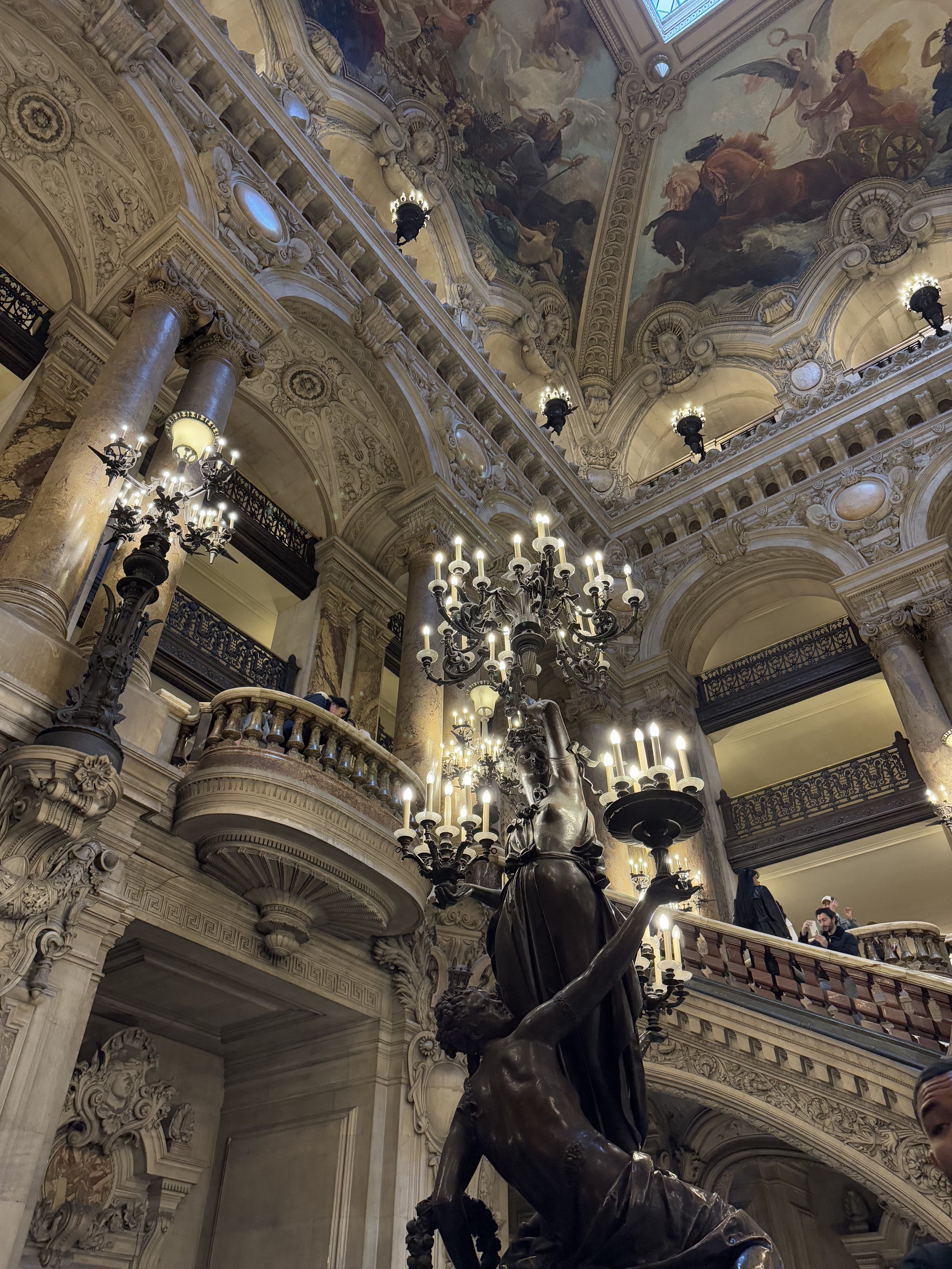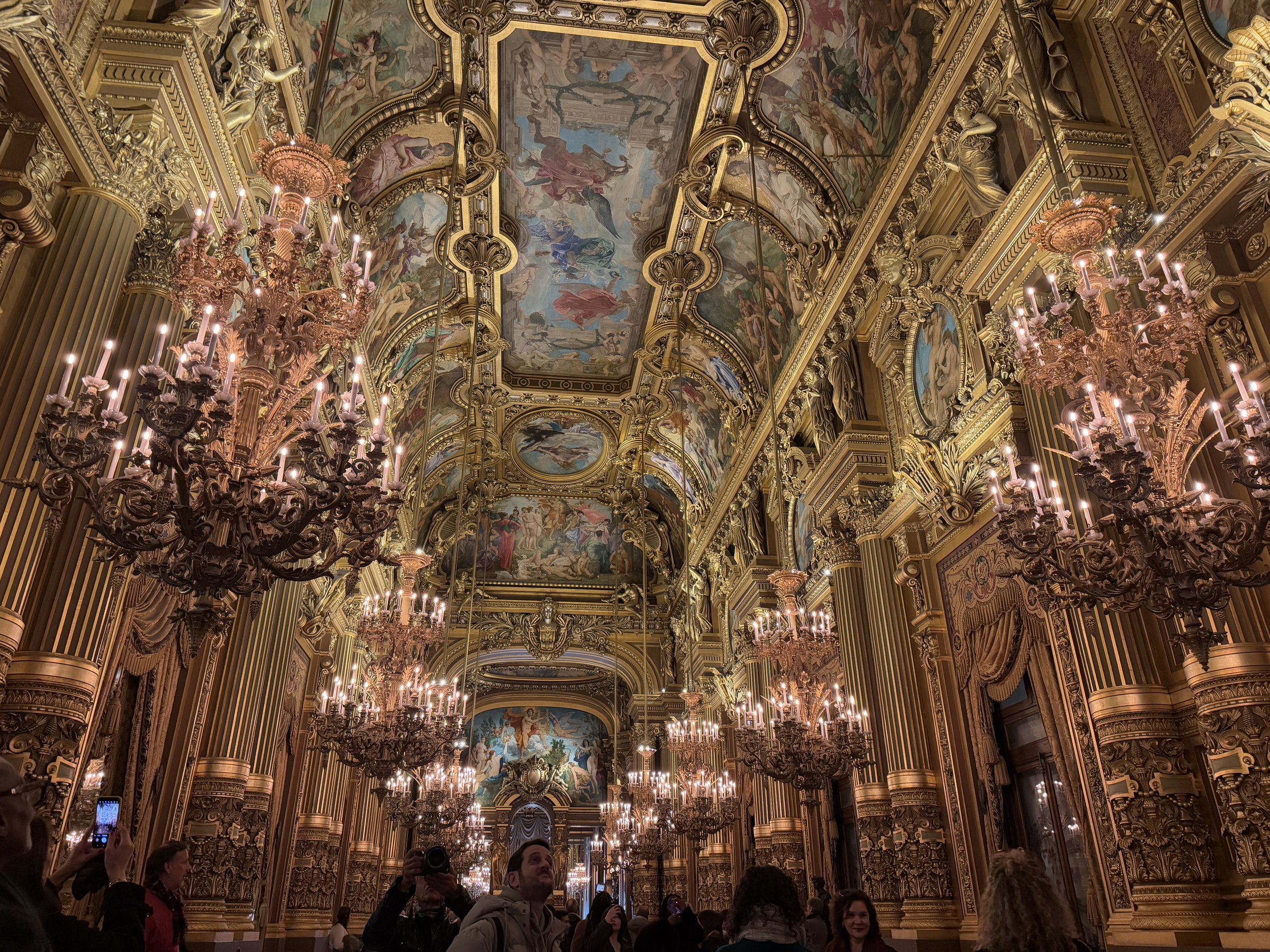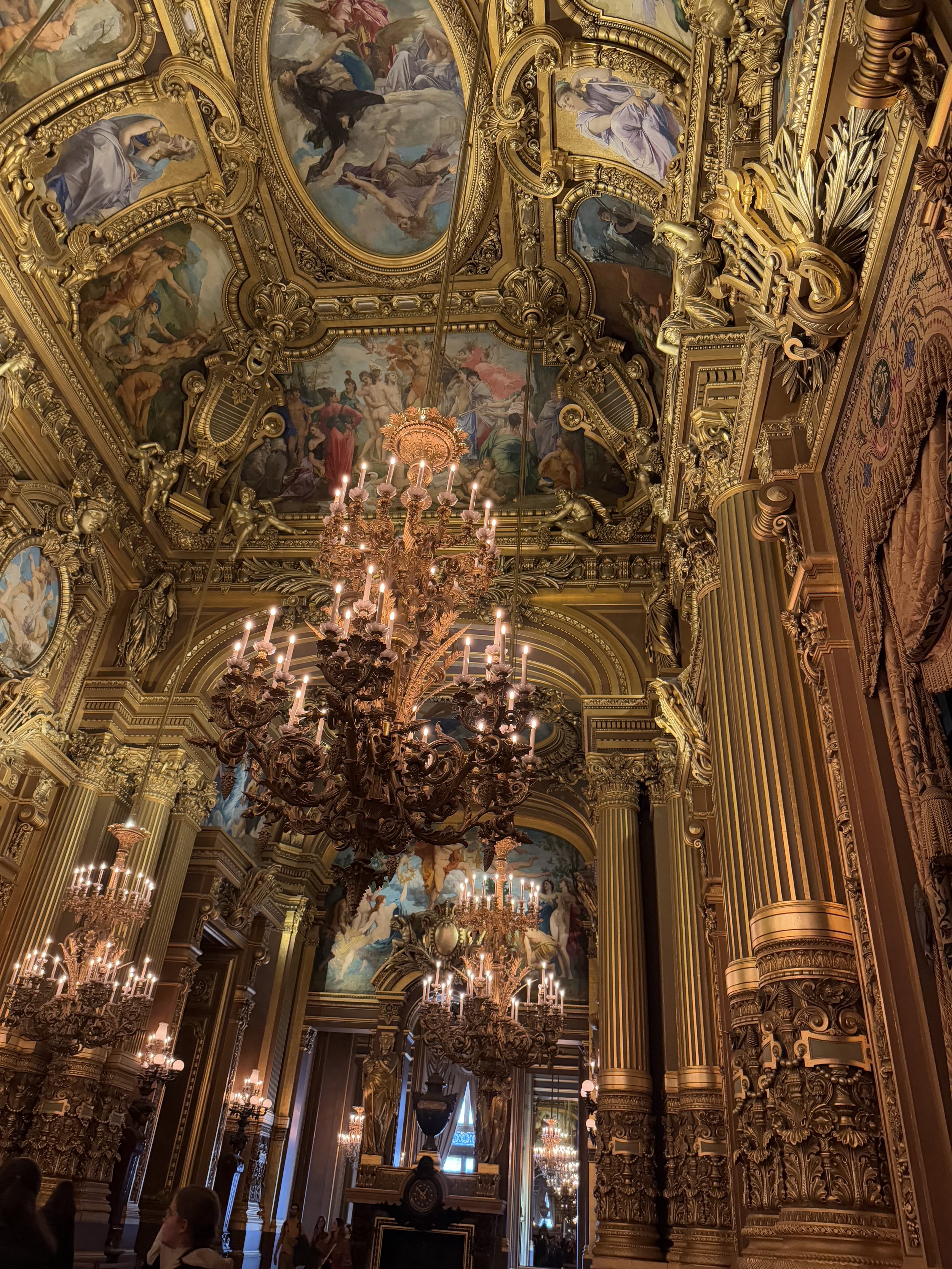Pearls of Paris I – Opéra Garnier
In Pearls of Paris, Year Abroad Editor Jamilya Bertram writes about studying in Paris on her year abroad, the amazing places she has discovered, and her favourite things about the city and Parisian life.
The Opéra Garnier auditorium (Image credits to Jamilya Bertram)
Here we are. Yet another girl writing about her time in Paris and how much she loves the city and never wants to leave – maybe not the most original idea for a column. But, as cheesy and cliché as it sounds, I have loved Paris since I first visited aged fourteen and, secretly, I’ve wanted to move here ever since. Therefore, I always knew that I wanted to spend at least some of my year abroad here. I’m aware that staying here for a few days when I was fourteen – and even moving here for six months – is not the same as living here permanently or growing up in the city. It’s no secret that I’m getting the filtered-down, croissants and Eiffel Tower, La Vie en Rose experience of Paris. Indeed, I openly acknowledge this, while also having to admit that I’m enjoying every minute of it.
Paris, to me and I’m sure to most others, is one of the cultural capitals of in the world. There is always something to do here:, something to see, a new area to explore, an exhibition that’s opened around the corner… Growing up in London, you might think I’d be used to this. However, for some reason, I never took take advantage of this in my daily life. Living in Paris, I’ve come to realise how fun and what a privilege it is to be in the centre of constant cultural and social activity. It’s shocked me how quickly my year abroad is flying by. So, I’m starting this column to try and record some of my experiences and discoveries in this beautiful city.
In this instalment, I want to share my favourite Parisian experience: a guided tour of Opéra Garnier, also known as Palais Garnier. Completed in 1875 and the setting of Gaston Leroux’s 1910 novel The Phantom of the Opera, this opera house is without question one of the most beautiful places I have ever visited. (Let me also take this opportunity to sing the praises of guided tours. I learnt much more about the building, its history and the Easter eggs hidden in its architecture than I would have by simply buying a self-guided ticket – although, of course, that is completely worth doing in itself.)
When chosen by Napoléon III for the project, Charles Garnier was a virtually unknown 35- year-old architect and struggling to support himself. Yet, he was awarded the task of building a new opera house to replace the previous one on rue Le Peletier, which lacked a separate entrance for the head of state and was built mostly of wood. Garnier needed to design a building that Napoléon III could enter without an attempt on his life and which wouldn’t catch fire every other week (so it went in the days with no electricity). The finished product has been labelled one of the most famous opera houses in the world, with 172 performances per season.
The Grand Staircase (Image credits to Jamilya Bertram)
To me, Opéra Garnier is the epitome of French 19th- century decadence: luxury, opulence, candelabras and paintings everywhere you look. It’s like stepping into Beauty and the Beast’s palace- or the Sun King’s (Louis XIV’s) court. Some of my favourite parts were the Grand Staircase, the Grand Foyer (modelled after the Hall of Mirrors in Versailles – although, personally, I like the Grand Foyer even more) and, of course, the auditorium itself.
Walking around the opera house is like stepping into someone’s gold-covered, jewel-encrusted, crazy fantasy. Usually, I’m not particularly partial to the over the top and madly decadent. However, it was a lot of fun imagining the subscribers and French nobility meeting under this roof in full dress and full glory.
The Grand Foyer (Image credits to Jamilya Bertram)
During the 19th century, the opera was the place to see but, most importantly, to be seen at. The Grand Foyer was built especially for this purpose. During intermissions, which could last up to an hour, the Grand Foyer would transform into a mini ballroom, offering the Parisian elite a chance to mingle, make connections and gossip. Even I have to admit that networking might not be so painful if done in such a beautiful room.
The Grand Foyer (Image credits to Jamilya Bertram)
You might think Garnier had only one thing in mind: luxury. But the Opéra contains countless hidden gems that reflect the time and thought he put into designing the building. The Sun and Moon salons are examples. Both are appropriately decorated, with the Salon of the Sun’s ceiling featuring golden suns and the Salon of the Moon’s dome being adorned with silver leaf, moons and other night-sky details. Both salons have mirrored walls, creating infinite reflections - but Garnier added his own hidden touch. In the Salon of the Moon, the mirrored walls are tinted with orange so that, the further you look back into the infinity of reflections, the darker the orange colour gradient appears, giving the impression of the perfect sunset introducing the night sky.
There are many more details I could tell you about the Opéra that I learnt on my visit, like the ghosts haunting the mirrors in the Grand Foyer- or the poor horses that pulled the opera machinery (they were born and died underground, never seeing daylight- thankfully, this doesn’t happen anymore…). But I don’t want to give too much away - and I also don’t want to turn this into a five-page essay. So, I’ll round this off by recommending you visit yourself and see the stunning building in real life, as I don’t really think my photos do it justice. Next on the to-do list: see a show there!



